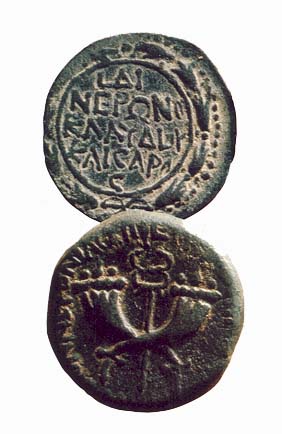Image Details

Israel Museum
Minted at Sepphoris in 68 C.E., this coin identifies Sepphoris as the Roman “City of Peace” (Eirenopolis), probably because of the city’s willingness to cooperate with Rome during the First Jewish Revolt against the empire (66–70 C.E.). On one side of the coin is an inscription honoring the emperor Nero (54–68 C.E.); the reverse side bears the image of a double cornucopia intersected by a staff, two symbols commonly found on first-century Jewish coins. Although they date to a time of cooperation with Rome, the coins issued at Sepphoris during the revolt do not bear the image of the Roman emperor; nor do they incorporate any pagan motifs or depictions of foreign deities that might have offended the religious sensibilities of Jewish citizens.
By contrast, a second-century C.E. coin shows all the characteristics of a pagan design (see photograph). By the mid-second century C.E., such signs of Greco-Roman influence were on the rise in Sepphoris. But as Chancey and Meyers point out, scholars should be careful about using this late evidence to prove anything about the city in the time of Jesus.
